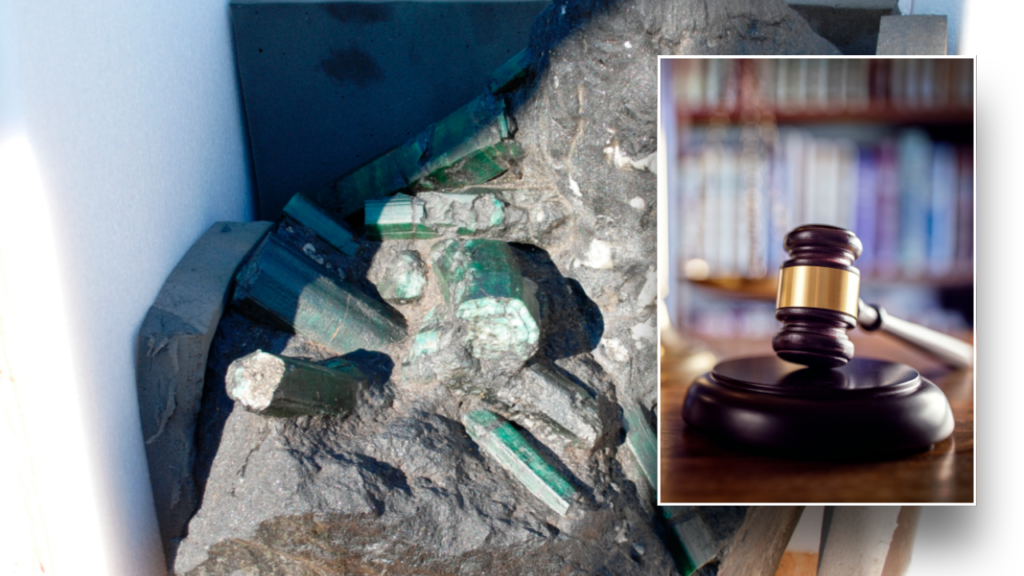In a significant legal development, the Bahia Emerald, a massive gem weighing over 840 pounds, is set to be returned to Brazil after a prolonged legal battle spanning over two decades. This decision was forthcoming from U.S. District Judge Reggie Walton, who ruled that the gem must be repatriated following a request from the Brazilian government. The gem has a complex history, having been at the center of numerous ownership disputes since its mining in Bahia, Brazil, in 2001. Given its tumultuous past, the emerald has even been dubbed “cursed,” reflecting the plethora of legal challenges and controversies that have ensued.
The journey of the Bahia Emerald began in 2001 when it was stolen, sparking a series of claims from various parties regarding ownership rights. The diamond’s saga has not only captivated gem enthusiasts but also triggered extensive legal proceedings that involved the U.S. justice system. The U.S. Department of Justice (DOJ) took custody of the emerald in 2015, seeking a restraining order to protect it during the tumultuous legal proceedings related to its ownership. Since that time, the Brazilian government has expressed a consistent interest in reclaiming the gem, arguing it was unlawfully exported from their country.
On Thursday, Judge Walton’s ruling brought clarity to the situation, asserting that those opposing the return of the emerald had failed to provide sufficient evidence to block its repatriation. In his court document, Walton stated, “Upon careful consideration of the parties’ submissions, the Court concludes for the following reasons that it must vacate the stay currently imposed in this case and grant the government’s application.” This decision is seen as a pivotal moment in the long-standing saga of the Bahia Emerald, as it signals a judicial resolution in favor of the Brazilian government.
The law firm Mayer Brown, which represented Brazilian interests in this case, celebrated the ruling as a substantial victory. They emphasized their comprehensive efforts in facilitating the gem’s return, highlighting their work in formulating a formal request under the mutual legal assistance treaty (MLAT) between the United States and Brazil, which lays the foundation for cooperative legal actions. Mayer Brown noted that after the involved parties from Brazil who initially exported the emerald illegally exhausted their appeals, they were able to collaborate with the DOJ to push for the enforcement of Brazil’s forfeiture order regarding the emerald.
In April 2022, following this structured approach, the DOJ submitted a motion to the U.S. District Court for the District of Columbia. This motion sought the court’s order for the emerald’s forfeiture under the auspices of the MLAT, which ultimately led to Judge Walton’s recent ruling. The Bahia Emerald’s return marks an important chapter in international law enforcement cooperation, emphasizing the significance of legal frameworks in addressing cross-border theft and cultural heritage preservation.
As the Bahia Emerald prepares to leave the United States and return to its homeland, this case stands as a testament to the complexities surrounding valuable natural resources and the legal battles they can incite. The ongoing story—a mixture of intrigue, legal contention, and cultural significance—reminds us of the broader implications of ownership in a global context, particularly when it involves invaluable artifacts that hold deep historical and cultural ties to their countries of origin.
Andrea Margolis, a writer for Fox News Digital and Fox Business, reported on this significant development, shedding light on the intricate legal framework that supports the return of such culturally significant assets. Readers interested in following the unfolding of this notable case may reach out with tips and insights.



